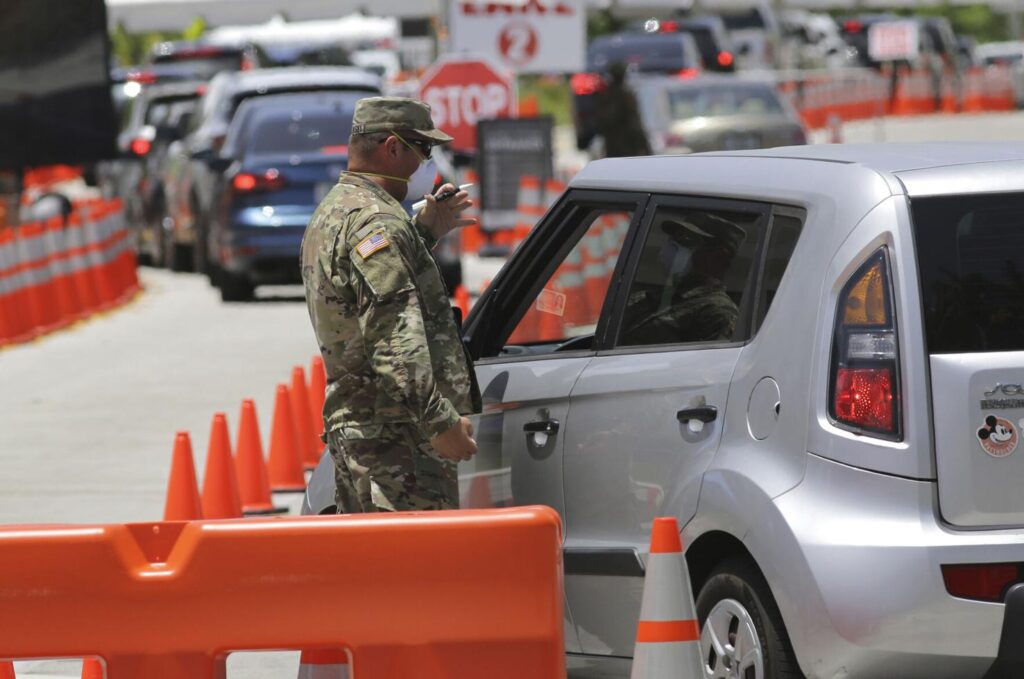The Center Square
By John Haughey
October 15, 2021
“Eifert told the Senate panel that Florida ranks second-to-last nationally in Guard members-to-Citizen ratio with roughly 12,000 troops handling a mission agenda for 20,000-25,000.”

(The Center Square) – With 1,350 miles of coastline, it’s not surprising Florida’s vulnerability to hurricanes makes it the nation’s fourth most disaster-prone state.
Since 1992’s Hurricane Andrew, the Florida National Guard (FNG) has been activated more than 90 times in response to in-state natural disasters, contributing 1.5 million workdays – 834,000 between 2016-21 alone – to disaster response.
Over a 551-day span beginning in March 2020, 2,900 FNG members accumulated nearly 700,000 workdays conducting 5.669 million COVID-19 tests at 47 sites, from 16 mobile labs and during 664 calls on nursing homes/assisted living sites across Florida.
The FNG also administered 1.5 million vaccines at 10 sites and during 16 mobile missions as part of a $169 million pandemic activation, according to a presentation by FNG Adjutant General James Eifert to the Senate Military, Veterans Affairs, Space & Domestic Security Committee Tuesday.
Meanwhile, since 9/11, more than 25,000 FNG members have been deployed by the U.S. Department of Defense (DOD), usually overseas, according to Eifert, topping 2.9 million workdays between 2016-21, more than three times the same metric for natural disasters.
Yet, Eifert told lawmakers, despite frequent natural disasters and DOD deployments, FNG’s force structure is about 12,000 under the Defense Authorization Act administered by the U.S. National Guard Bureau (NGB).
Under NGB’s force structure, not changed significantly in 50 years, Pennsylvania has more guard members than both California and Florida — as do Ohio, Louisiana, Georgia and Mississippi.
In fact, Florida, where the population has doubled since 1990, has less force structure than Alabama despite being five times more populous, according to NGB.
Eifert told the Senate panel that Florida ranks second-to-last nationally in Guard members-to-Citizen ratio with roughly 12,000 troops handling a mission agenda for 20,000-25,000.
The NGB’s “ridiculous” force structure creates “a significant challenge for our governor to be able to have forces at his disposal on Florida’s worst day,” Eifert warned. “I would argue it’s been a lack of attention on the National Guard Bureau’s part over the past 50 years, and a lack of fortitude in wanting to go and make the hard case to these congressional delegations.”
“This is stark. This is scary. It’s a ticking time bomb,” said Sen. Danny Burgess, R-Zephyrhills.
“It’s really time do something about it,” said Chair Sen. Tom Wright, R-Sarasota, suggesting the Legislature adopt a memorial, or resolution, calling on Congress to reform NGB’s force structure process. “We are really going to have to try to push a movement.”
State lawmakers will be augmenting underway campaigns by Florida’s Congressional delegation and Gov. Ron DeSantis who, in June, called on NGB to initiate “long overdue” reform to ensure states with greatest needs get a “fair share” of resources, claiming Florida is “significantly underrepresented” in force allocations.
Four Florida U.S. Reps. – Republicans Mike Waltz, Scott Franklin, Matt Gaetz and Democrat Stephanie Murphy – in a February letter to NGB said Florida’s force structure “is not enough” with those serving constantly asked to do more.
“This means individual guardsmen must respond to mission requirements again and again without enough rest or sufficient ability to rotate personnel,” they said.
In July, Waltz and Murphy, who serve on the House Armed Services Committee, were among 59 House members from California, Texas and Florida – the nation’s three most populous states that also have the lowest Guardsmen-to-civilian ratios – who called on U.S. Defense Secretary Lloyd Austin to review NGB’s force structure.
“The limited resources allocated to our states has affected our Guard bureau’s ability to rotate personnel, putting greater demand on Guard families,” they wrote.

